Design and construction techniques to ensure the structural stability of architectural structures
-
- Vibration Control Structural Design - PC Lattice Girder Optimization Technology
-
As the vibration performance (SPEC) requirements for cutting-edge semiconductor production equipment become more and more demanding, we relentlessly research, develop, and apply enhanced vibration performance solutions for high-tech FAB structures to design and build the optimal structure that satisfies the building's functional requirements.
- Maximizing material performance - Development and application of high damping, high elasticity, ultra-high elasticity concrete PC lattice girders
- Advanced design techniques - Maximizing design efficiency through topology optimization
-
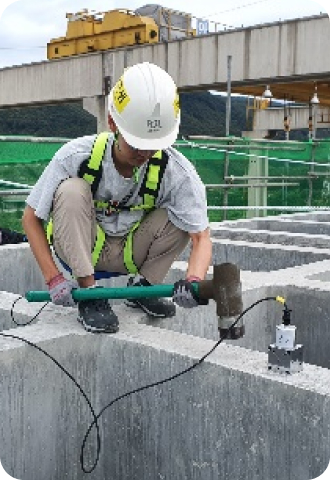
Optimized PC lattice girder construction
-
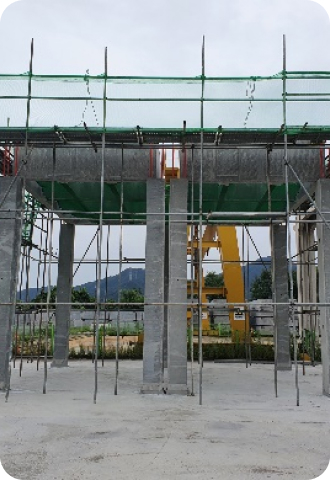
Verification of required vibration performance
-
- Long-span Composite Beam
- We conduct research on the development of composite beam technology, which maximizes structural performance by combining steel for concrete structures with shear connectors. This technology can be applied to structures with a span length of 24 meters, and is currently being utilized in the field in high-tech projects.
-
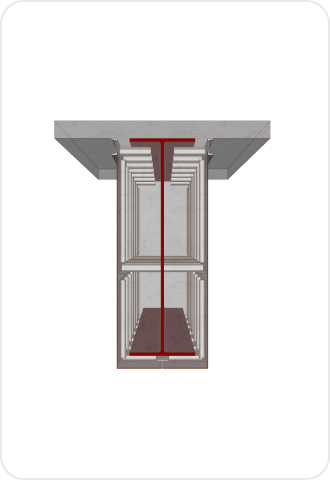
Composite beam section (example)
-
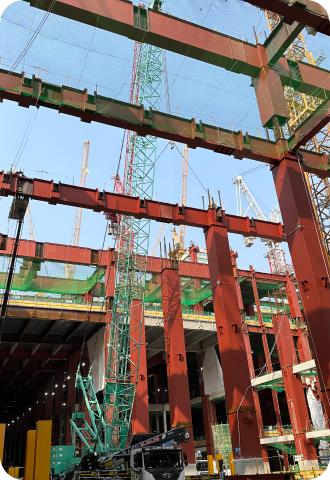
Long-span composite beam construction
-
- Structural Analysis and Design for Super High-rise Buildings
- The objective of structural analysis and design technology is to ensure the highest level of quality by examining the economy, stability, usability, livability, and constructability of super high-rise buildings during the design stage to minimize potential problems during the construction phase. To achieve this, we research, develop, and apply related core technologies in the field.
-
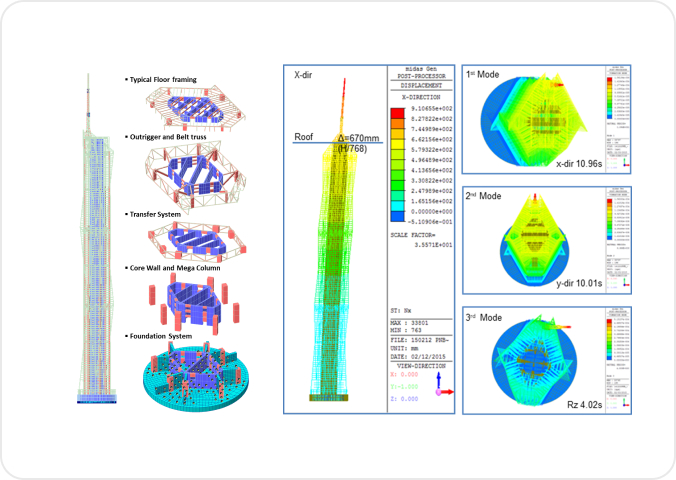
Structural system analysis and design
-
- Construction Stage Analysis Technology
- Unlike completed buildings, structures under construction require separate safety and building deformation evaluations based on the construction method and temporary structures used. To ensure construction safety and the best building quality, we predict structural deformation according to the construction stage, and monitor the walls and columns in real time during on-site construction.
-
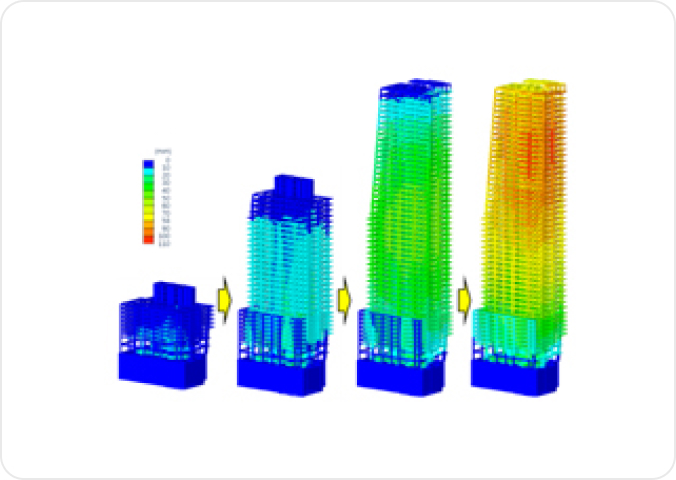
Construction stage structural analysis
-
- Analysis and Design of Large Space Structures / Erection Engineering
- The design and construction process of large space structures can be summarized as analysis, design, fabrication, and erection monitoring. Based on Space Frame analysis, membrane shape and member optimization, nonlinear analysis, and construction stage-specific analysis technologies, we conduct research and development and provide on-site support for large space structures composed of Truss, Space Frame, Cable, and Membrane. We are applying advanced analysis and optimization design technologies, such as geometry and material nonlinearity analysis, essential for the optimal design of large space dome structures with various support conditions and special shape-resistant structures, as well as Erection Engineering technologies in consideration of the construction stage.
-
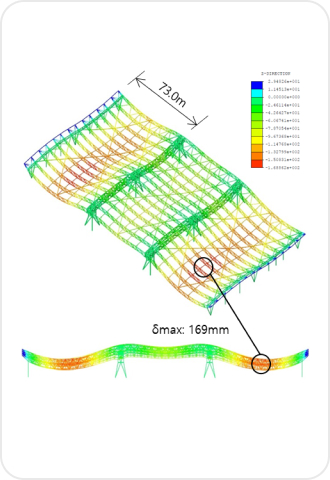
Large space structure structural analysis model
-
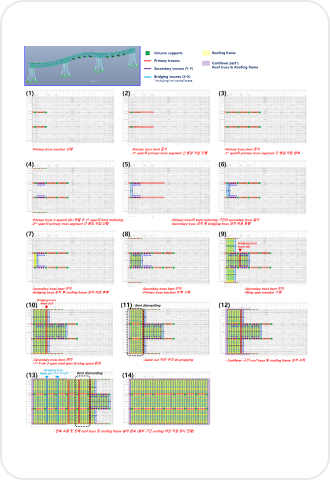
Erection Engineering
-
- PC Method Development and Construction Optimization Technology
- We are developing new PC components suitable for housing sites, improving constructability and safety through on-site application, and minimizing the risk of safety accidents during field work. Representatively, there are FRS, which was developed by improving structural performance and economic feasibility in the existing parking lot MRS (PC slab), and ZTW, which is used for high floor height to reduce construction period and improve constructability.
-
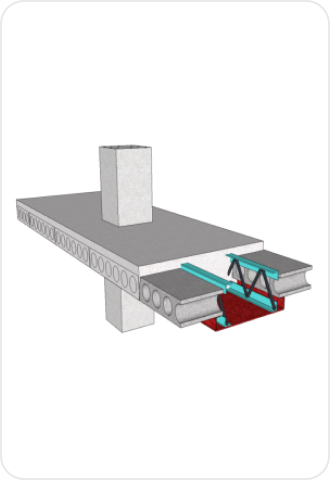
ZTW
(Zigzag Twin Wall) -
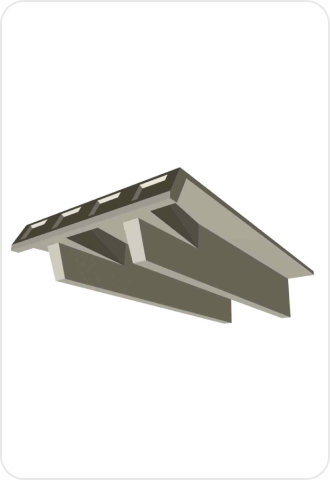
FRS
(Flat-end type MRS*)
*MRS (Multi Ribbed Slab)
-
- Seismic Analysis and Design Technology
- We perform seismic analysis and seismic-resistant design of buildings in preparation for potential earthquakes. Notably, we review the seismic performance of highly important buildings or those located in strong earthquake zones through a detailed nonlinear analysis.
-
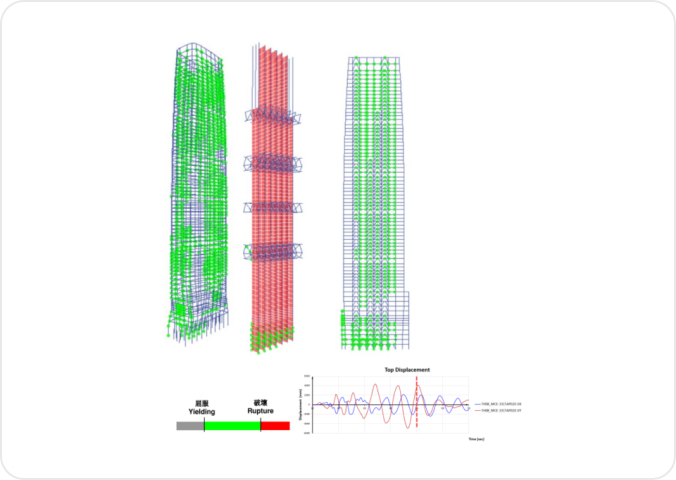
Structural push-over analysis